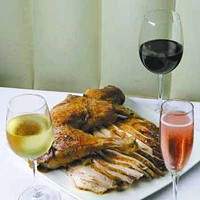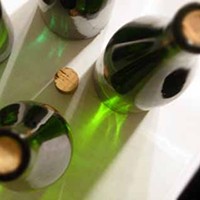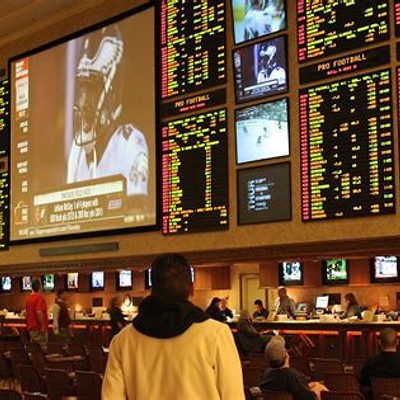There are plenty of reasons to appreciate this concept. Second label wines give us an opportunity to drink juice made by an expert winemaker we know and love, without the high-ticket price. Most second labels retail under $15 per bottle, compared to $25 plus for their main brands. It also lets a winemaker experiment on new grape varieties without risking his reputation.
Wineries realize there are two types of wine buyers -- those can fork out the bucks, and those who cannot. Second labels provide them access to both. And it's not like they're scraping excess grapes off the winery floor or anything, it's just they don't want to waste their good but not great grapes. In addition, the fruit doesn't necessarily come from the wineries' estates. Thanks to the current glut of California grapes and bulk wine, winemakers can snag high quality products for less money than growing it themselves, providing additional profits. Some winemakers even consider it a challenge to make great wine from average grapes rather than top of the line fruit.
It's often hard to find the connection to the mother winery on the bottle. Many wineries establish their second label as a separate business, taking pains to obfuscate the connection between the bread-and-butter and "discount" brand. The marketing people worry, sometimes legitimately, the second label may get higher ratings than the flagship or that it may be so lackluster that it taints the image of the elder.
I haven't seen the younger label beat the elder, but it may happen one day. However, they've come close, and I especially enjoy paying a quarter of what you'd pay for, say, Stag's Leap Vineyards, in their Hawk Crest second label. Established in the early 70s in Napa Valley, Hawk Crest is considered Stag's Leap's "house wine" and retails for around $10, as opposed to the main brand, which runs $30 and up. Another would be Liberty School, originally a Caymus Vineyards brand, but still overseen by Caymus' famed winemaker Chris Phelps.
Other cheaper-yet-still-designer options are Pastiche, made by Joseph Phelps. Markham Vineyards produces Glass Mountain, Chalone markets Echelon, and Duckhorn flaunts its Decoy label. Some other quality second labels are Napa Ridge (Beringer), Reds (Laurel Glen), Amberhill (Raymond), Novella (EOS), Kings Ridge (Rex Hill), and Rutherford Ranch (Round Hill).
Even France's Bordeaux, with their maze of chateaux and estates, sports some second label wines, named "second wines" in France. Famed Chateau Lafite Rothschild calls its second labels Moulin-des-Carruades, Chateau Latour, Les Forts de Latour, and Chateau Palmer Alter Ego de Palmer.
The second label path is the way to go if you're watching your budget. The winemakers at these high-profile wineries only want to make the best wine they can, so we might as well take every advantage.
Recommended Wines
Novella 2001 Synergy Juicy blend of Zinfandel, Petite Syrah and Sangiovese. $14. 



Napa Ridge 2001 Coastal Pinot Noir Great value in a California Pinot Noir. $9. 



Liberty School 2001 Chardonnay Grapes are sourced from two of the best regions to grow Chard: Santa Maria Valley & Santa Lucia. $14. 

 1/2
1/2
Latest in Corkscrew
More by Taylor Eason
-

Wines to pair with the feast and fowl
Nov 17, 2009 -

Wineries embrace social media but how well?
Nov 10, 2009 -

Riesling revival: It's one versatile grape
Nov 3, 2009 - More »
Calendar
-

Haw River Wine Tasting @ Carolina Beer Temple.
-

Haw River Wine Tasting @ Carolina Beer Temple.
- Wed., April 24, 5-7 p.m.
-

TRIVIA THURSDAYS!!! @ Elizabeth Parlour Room
-

LIVE MUSIC FRIDAYS: TRACE CASANOVA @ Elizabeth Parlour Room at Hooligans FC
-

Charlotte Grilled Cheese Festival @ SouthEnd Station.
-
How to build a brewery 1
It's not for the Mild
-
Dorie Greenspan's Tiramisu Cake
This layered cake is definitely a "pick-me-up" with a little booze and caffeine.
-
Of Comfort Food, Cheese and Chefs
Looking back at cuisine trends in Charlotte







